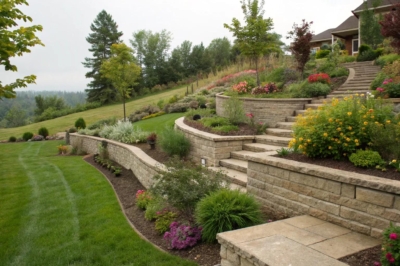1. Build a Retaining Wall
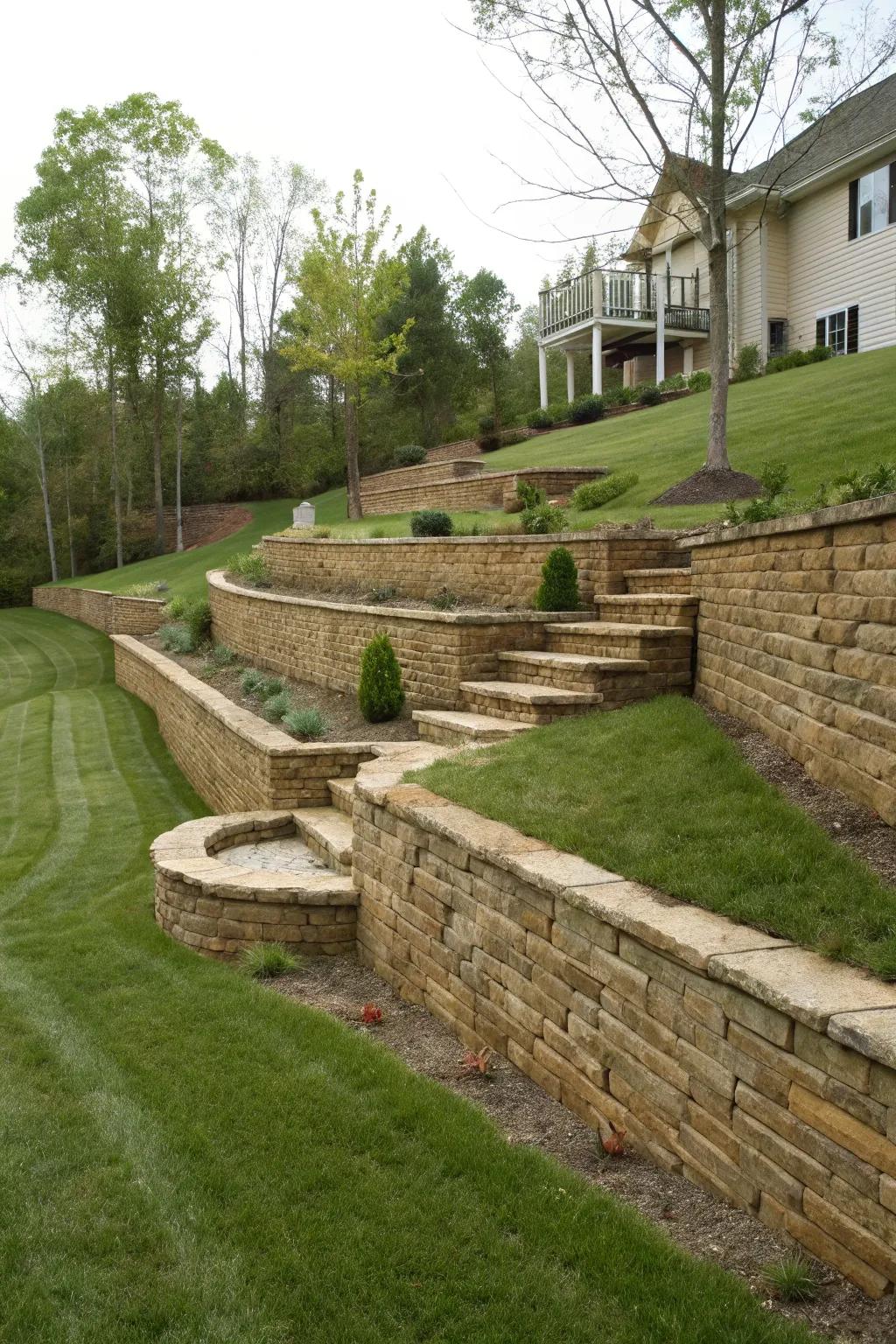
A retaining wall is a fantastic way to hold back soil and create a more usable space in your sloped yard. I once transformed a steep, unusable area into a beautiful multi-tiered garden using timber and stone walls.
Some handy options:
- Modular Retaining Wall Blocks: Create a stylish, durable retaining wall effortlessly with these modular blocks—ideal for any sloped yard.
- Heavy Duty Landscaping Fabric: Prevent soil erosion and promote drainage in your retaining wall project with this durable fabric.
- Garden Drainage Gravel: Enhance drainage behind your retaining wall with quality garden gravel for long-lasting stability.
2. Install a Rain Garden
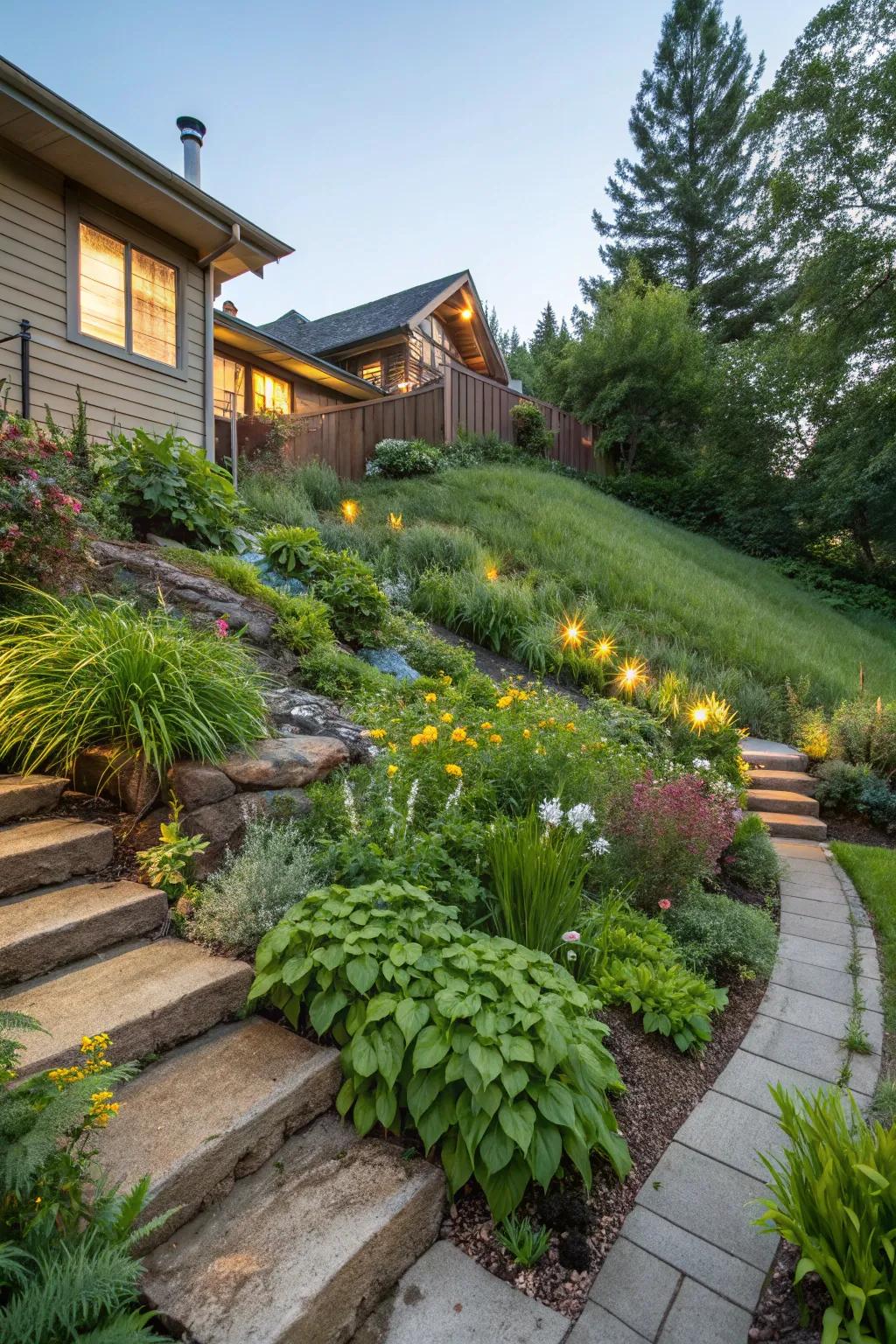
A rain garden captures runoff and allows it to soak into the ground. I designed one at the base of my slope, filled with native plants that thrive in wet conditions.
Check these products out:
- Rain Garden Plant Collection: Enhance your rain garden with native plants that thrive in wet conditions. Beautify and sustain naturally.
- Biodegradable Erosion Control Blanket: Stabilize your slope and prevent erosion with an efficient, eco-friendly control blanket. Ensure garden longevity.
- Soaker Hose for Garden Irrigation: Efficiently water your rain garden with a soaker hose, promoting deep root growth without runoff.
3. Add a Gabion Wall
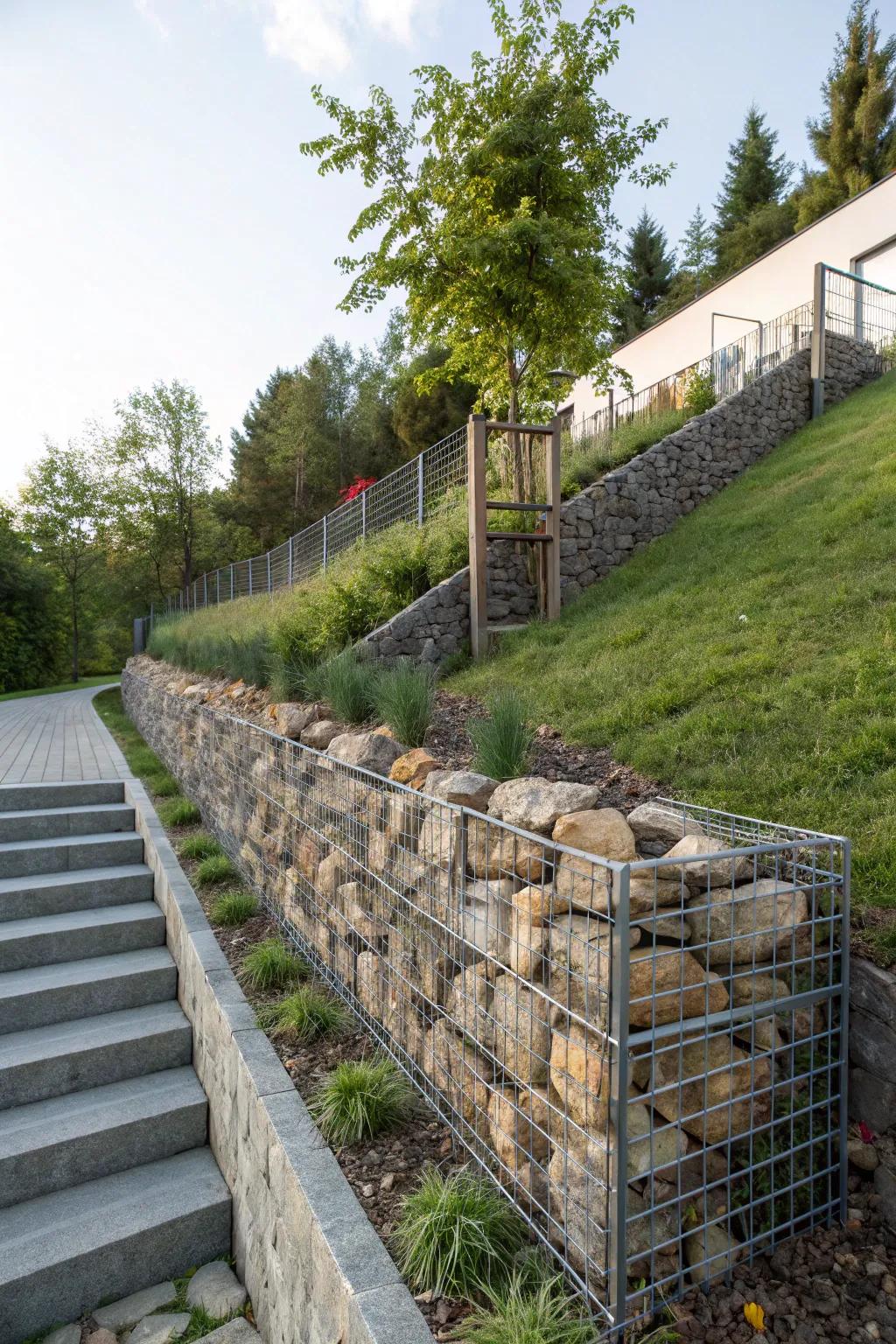
A gabion wall made from wire baskets filled with rocks can stabilize steep areas. I built a small gabion wall on my property, and it’s both functional and aesthetically pleasing.
A few helpful options:
- Wire Mesh Gabion Baskets: Stabilize your slope with durable gabion baskets, perfect for outdoor erosion control projects.
- Landscaping Rocks: Fill your gabion wall with these natural rocks for added stability and aesthetic beauty.
- Geotextile Fabric: Enhance drainage and soil stability by installing geotextile fabric behind your gabion wall.
4. Create Living Walls
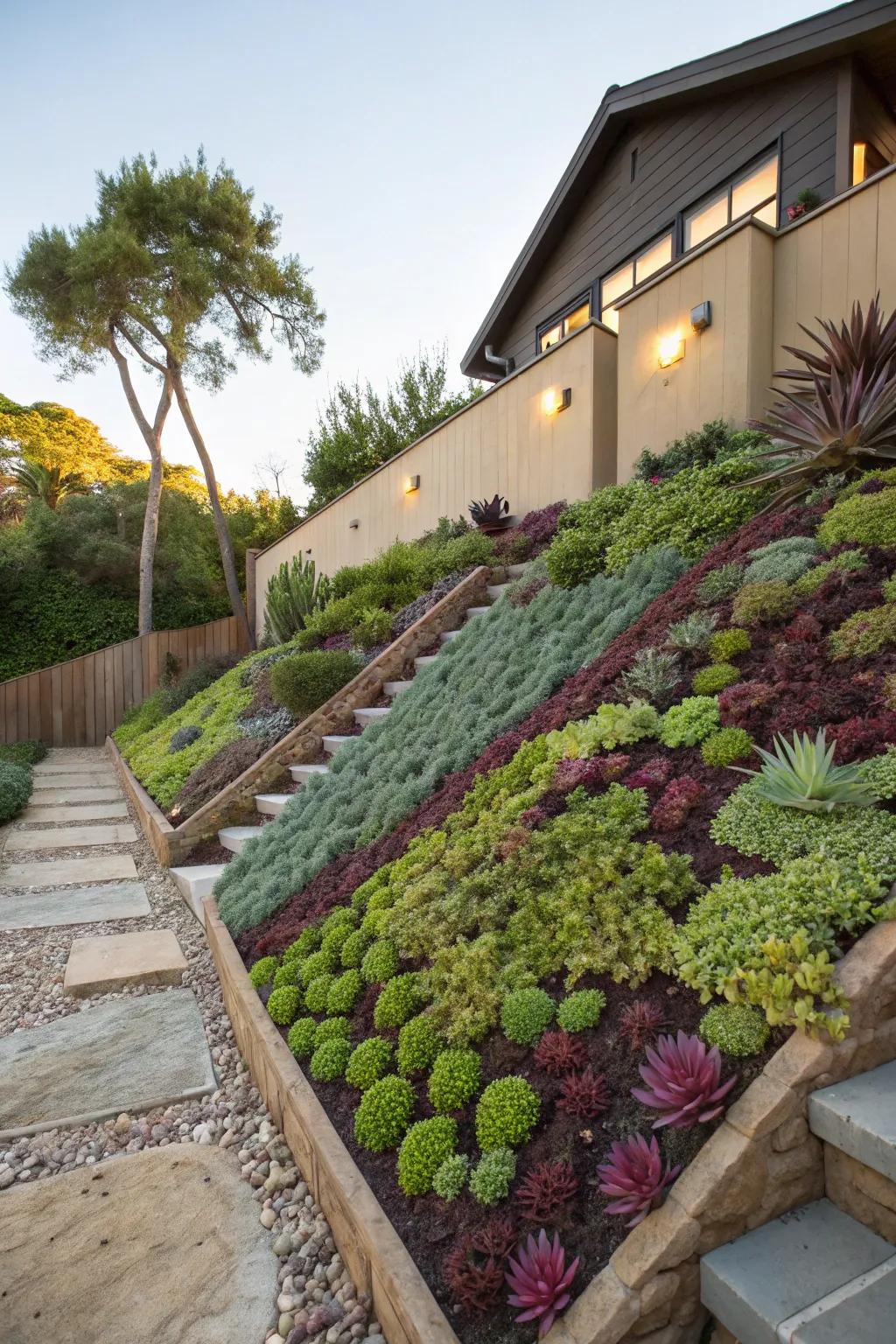
Living walls offer a green solution by using vertical planting to stabilize soil. I incorporated one using succulents, which added a burst of color and life to my slope.
A few relevant products:
- Vertical Garden Planter: Enhance your slope with a vertical garden planter, perfect for vibrant and lush plant display.
- Succulent Plant Assortment: Bring life to your garden walls with a colorful mix of low-maintenance succulents.
- Wall Planter Holders: Securely mount your plants using durable wall planter holders for stable and stylish greenery.
5. Create Rock Gardens
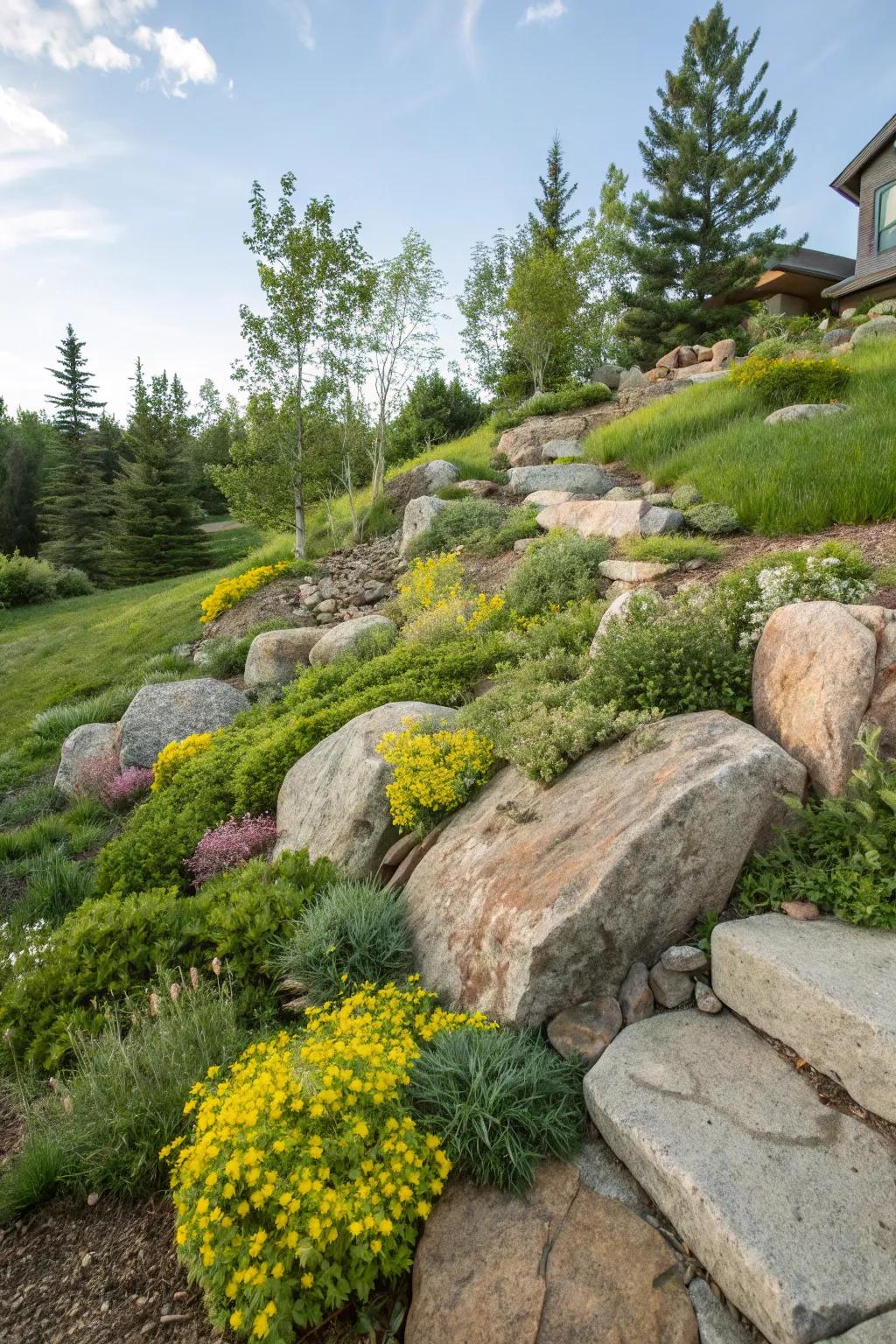
A rock garden can be both a functional and artistic way to combat erosion. I used large stones to break up water flow and added alpine plants to create a stunning visual effect.
Some ideas to consider:
- Decorative Landscaping Rocks: Enhance your rock garden’s structure and beauty with these durable decorative stones.
- Alpine Plants Variety Pack: Add vibrant alpine plants for striking color and texture in your rock garden.
- Garden Landscaping Fabric: Use landscaping fabric to control weeds and stabilize soil in your rock garden.
6. Try Terracing
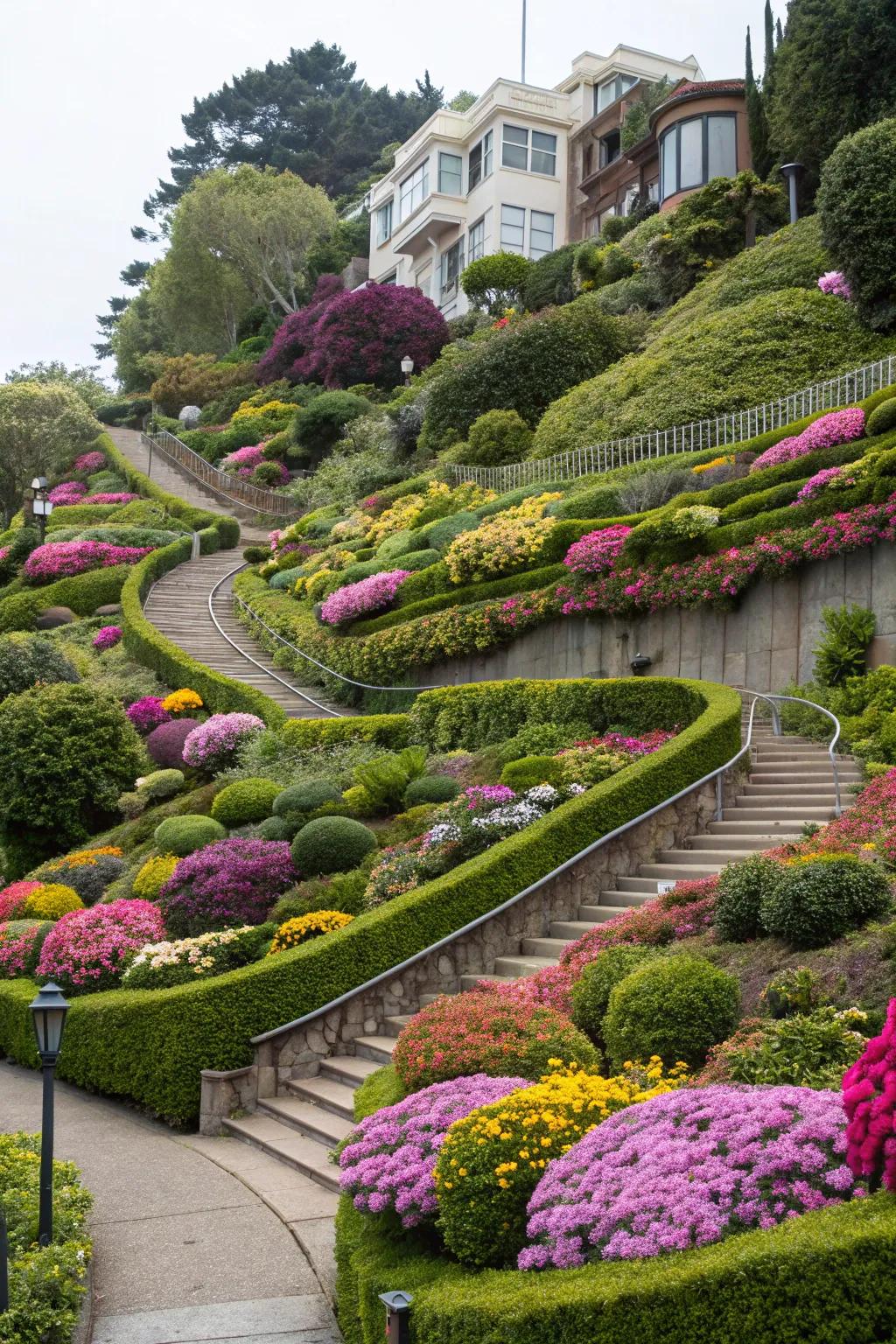
By creating terraces, you can turn a steep slope into a series of flat, plant-friendly levels. In my own backyard, terracing allowed me to cultivate a variety of plants that would otherwise struggle on a slope.
A few choices to try:
- Garden Terracing System: Easily create stable terraces, enhance your sloped garden, and prevent erosion effectively.
- Landscape Edging Kit: Define clean terrace edges, boost your garden’s aesthetics, and maintain organized planting areas.
- Retaining Wall Blocks: Build sturdy retaining walls to support terraces and protect your landscape from erosion.
7. Try Geotextiles
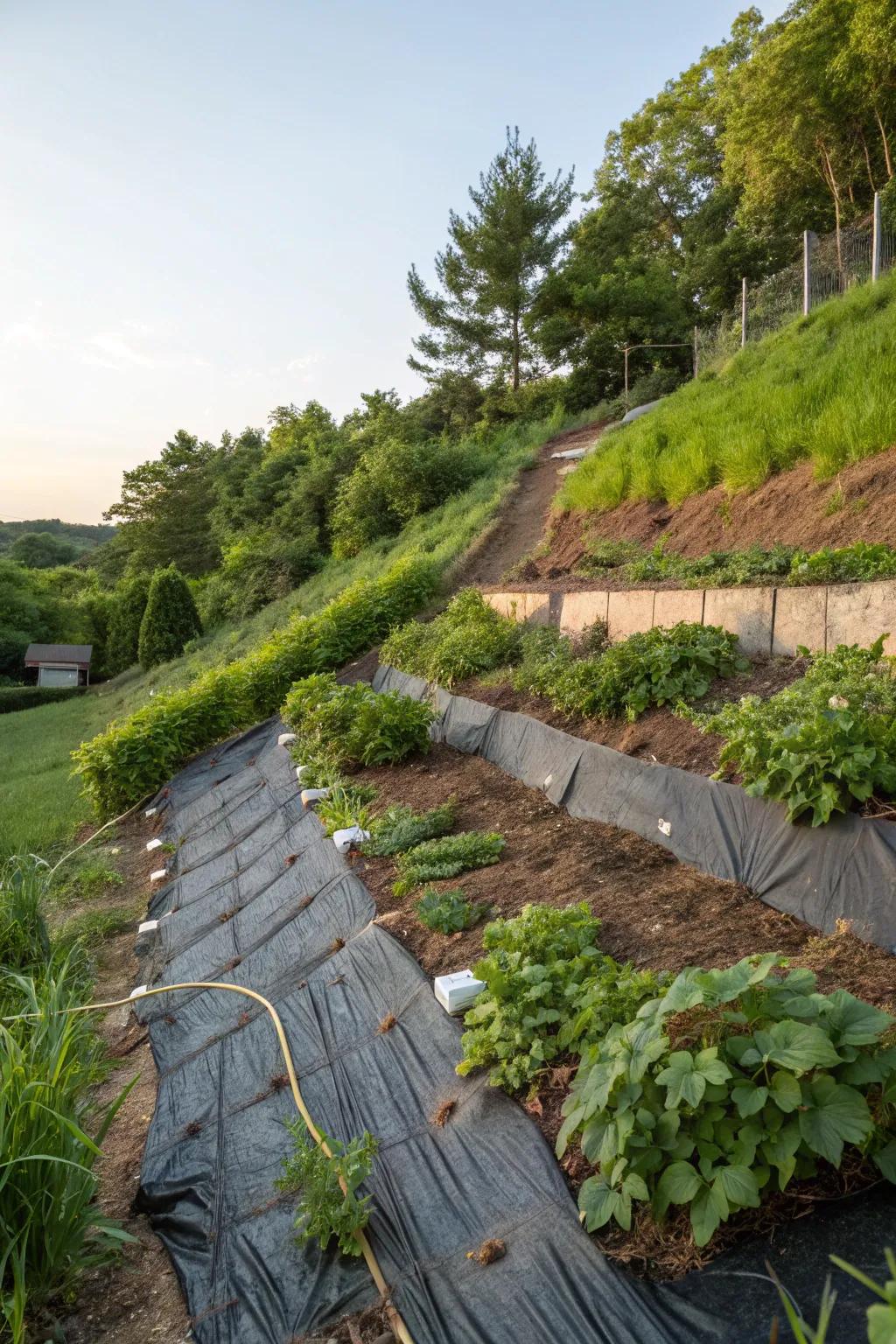
Laying geotextiles can reinforce soil and create a foundation for future planting. I used them on a tricky section of my yard, and they’ve provided excellent support for new growth.
You might give these a try:
- Geotextile Landscape Fabric: Strengthen your soil foundation with durable fabric designed for sloped yard stabilization.
- Garden Staples for Geotextiles: Secure your geotextile fabric with reliable garden staples for enhanced stability and protection.
- Erosion Control Blankets: Prevent soil erosion on slopes using effective control blankets designed for easy installation.
8. Incorporate Mulching
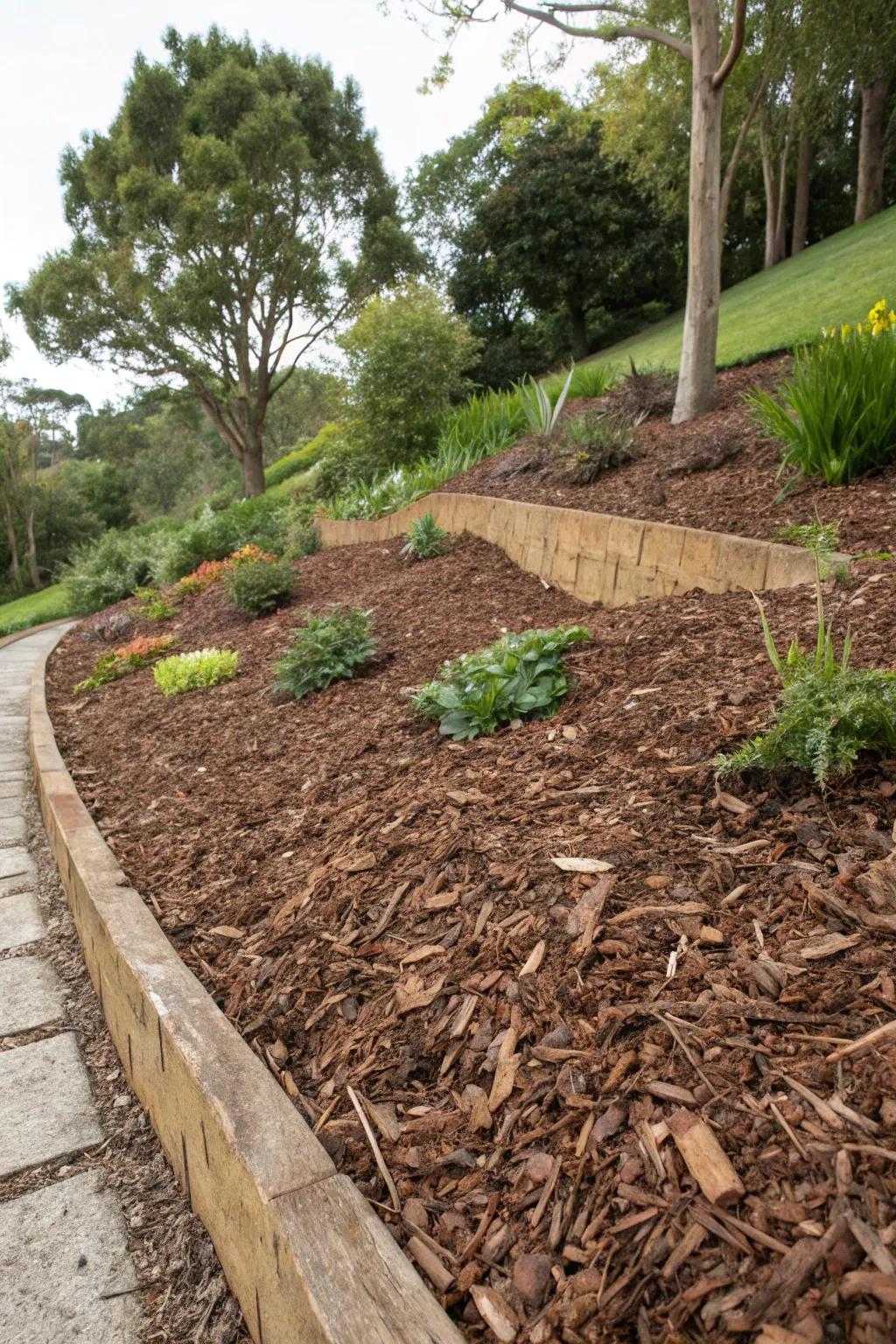
Using mulch is a simple yet effective way to protect soil from erosion. I love using bark mulch, as it not only secures the soil but also adds a rich, earthy aroma to the garden.
Explore these options:
- Natural Bark Mulch: Enhance your garden with natural bark mulch to prevent erosion and enrich your soil.
- Garden Mulch Mat: Protect your sloped yard with a garden mulch mat for effective erosion control.
- Eco-Friendly Mulch Chips: Use eco-friendly mulch chips to secure your garden’s soil and add a rustic aroma.
9. Harness the Power of Logs
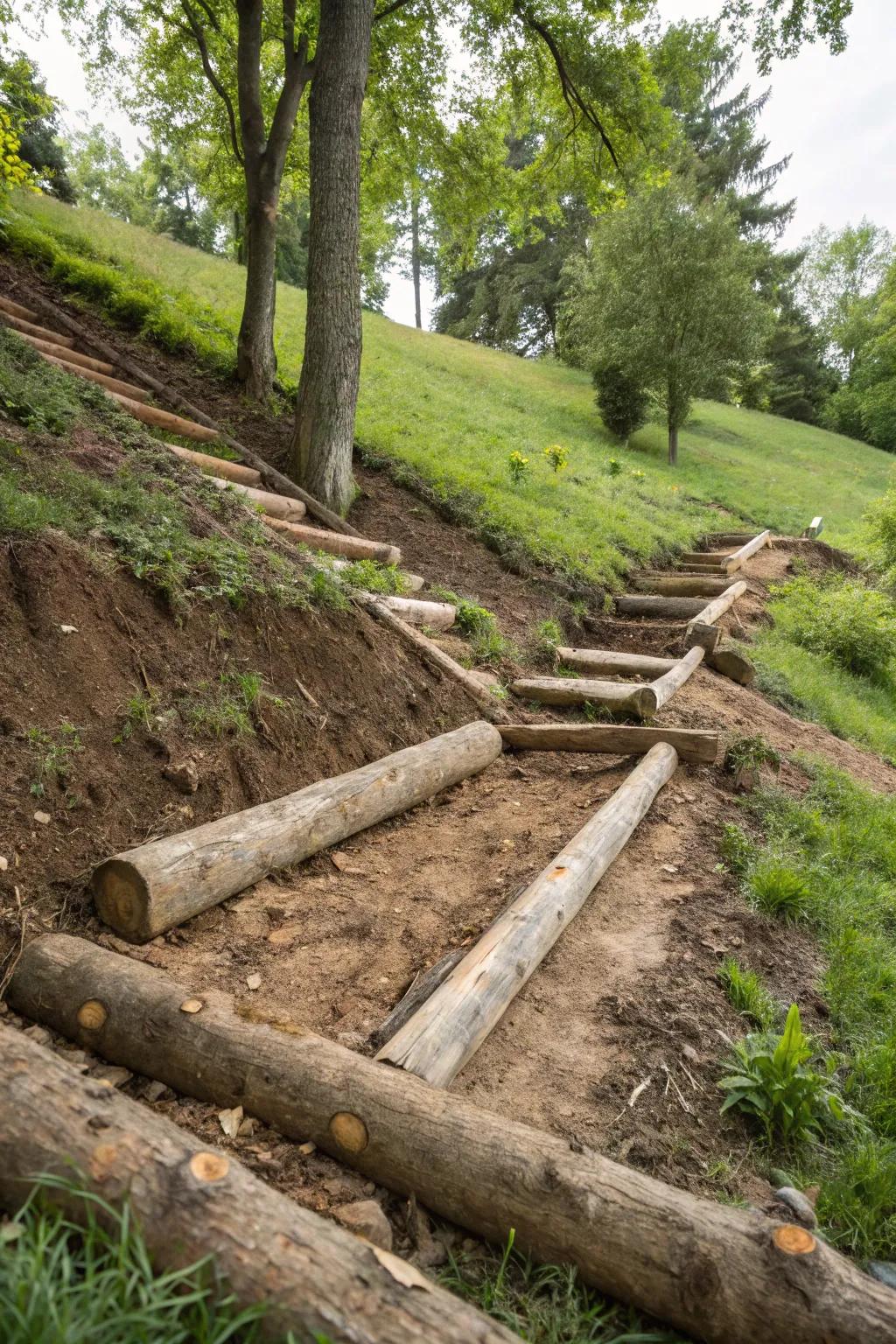
Using logs to create natural barriers can slow water flow and reduce erosion. I placed logs strategically on my slope, which also provided a habitat for beneficial insects.
Give these a look:
- Natural Log Edging: Enhance your slope’s look and function with log edging, reducing erosion effectively.
- Wooden Landscape Stakes: Secure logs in place with durable stakes, ensuring stability on your sloped yard.
- Insect Habitat Log Houses: Support beneficial insects by installing log houses, enhancing your garden’s ecology.
10. Plant Shrubs and Trees
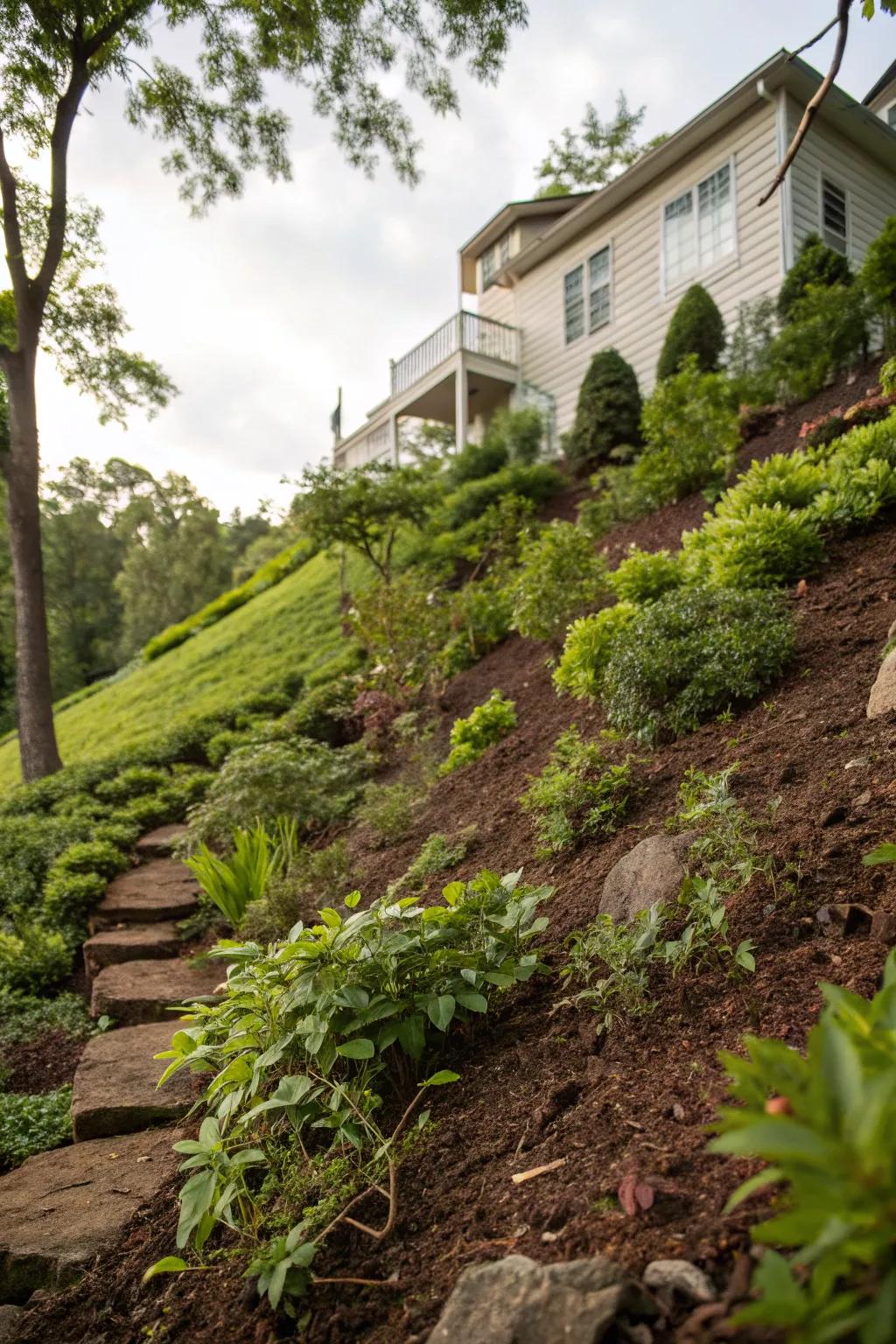
Deep-rooted shrubs and trees can effectively anchor the soil. I planted a mix of ornamental grasses and dwarf shrubs, which now form a natural barrier on my slope.
Might be a good match:
- Dwarf Shrub Seeds: Plant dwarf shrub seeds to create a natural barrier and prevent soil erosion effectively.
- Ornamental Grasses Mix: Enhance slope stability and aesthetic with a mix of easy-to-grow ornamental grasses.
- Tree Seedling Kit: Use a tree seedling kit to establish deep roots and anchor the soil on slopes.
11. Use Erosion Control Blankets
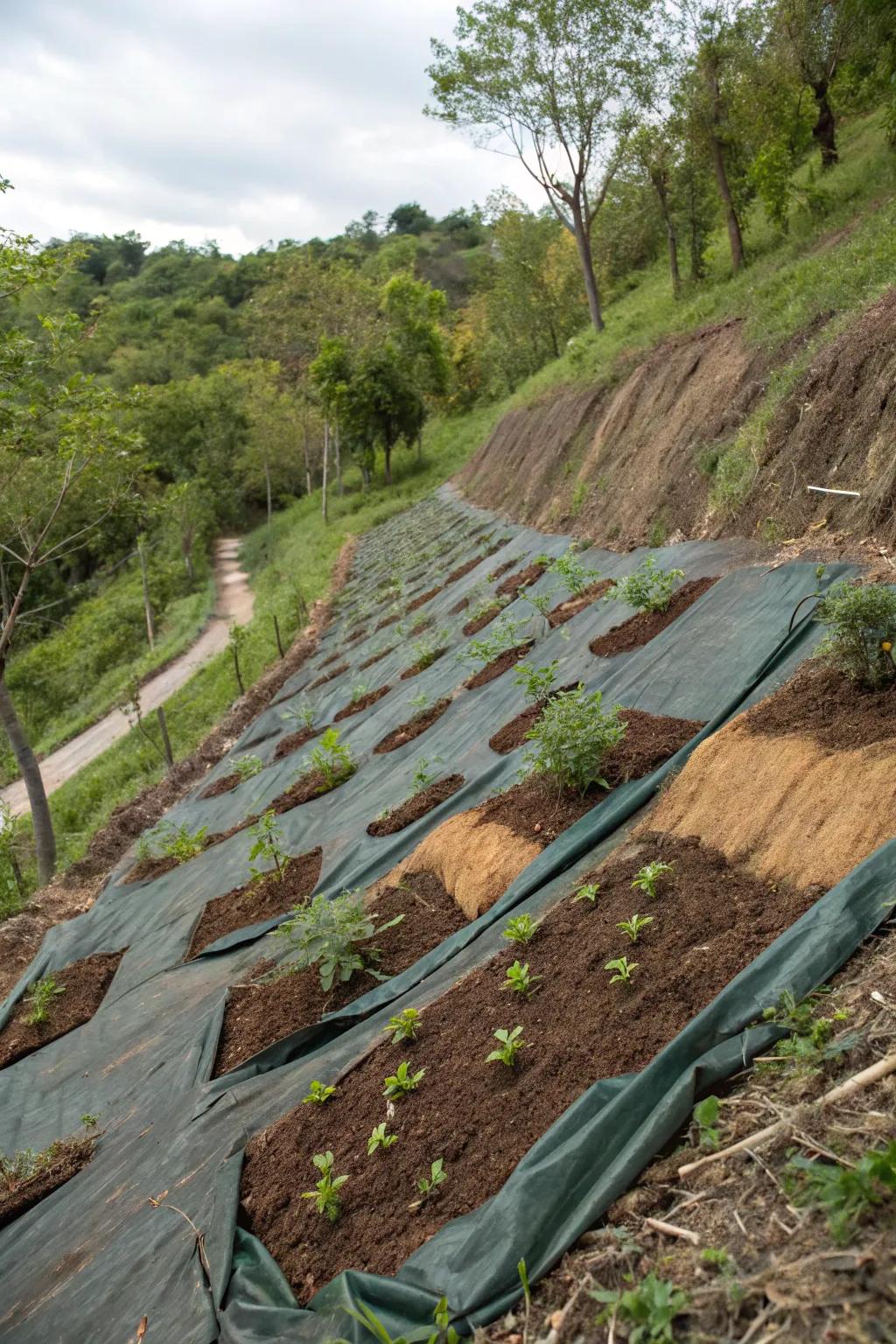
For immediate protection, erosion control blankets can stabilize soil while plants take root. I used coconut fiber blankets on a steep hill, and they biodegraded beautifully over time.
Possibly helpful picks:
- Coconut Fiber Erosion Control Blanket: Secure your slope with biodegradable coconut fiber blankets, ideal for stabilizing soil effectively.
- Jute Erosion Control Mat: Utilize jute mats to help prevent soil erosion while allowing vegetation to grow naturally.
- Straw Erosion Control Fabric: Choose straw fabric for immediate soil stability, promoting plant root establishment efficiently.
12. Implement Drip Irrigation
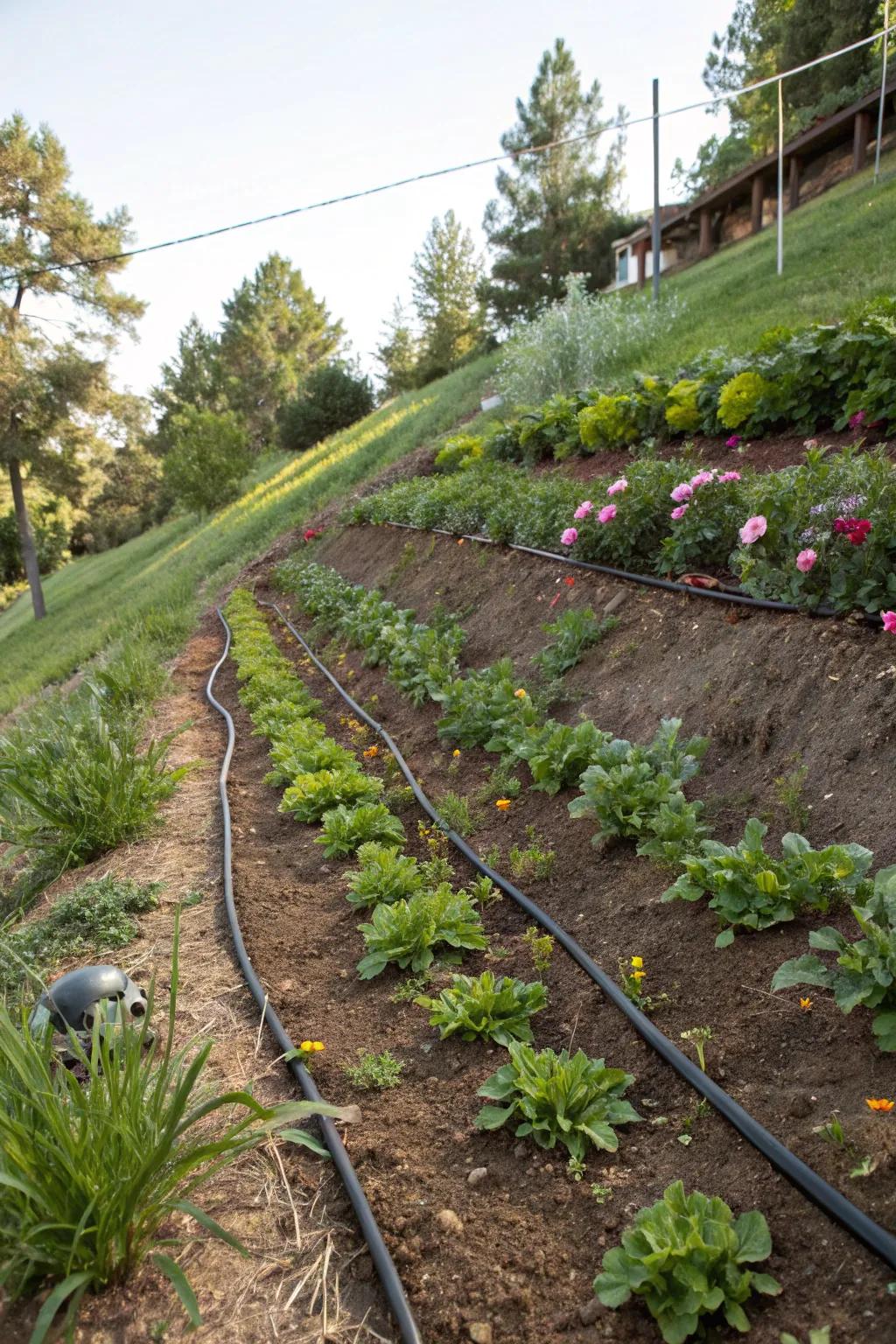
Drip irrigation delivers water directly to plant roots, minimizing runoff. My drip system has been a game changer, keeping my slope hydrated without washing away soil.
These products might help:
- Complete Drip Irrigation Kit: Easily set up a complete drip system to ensure efficient watering of your slope garden.
- Irrigation Timer: Automate your watering schedule with a reliable timer to maintain consistent soil moisture levels.
- Drip Irrigation Tubing: Install durable tubing to distribute water precisely to each plant, helping reduce soil erosion.
13. Build a Dry Creek Bed
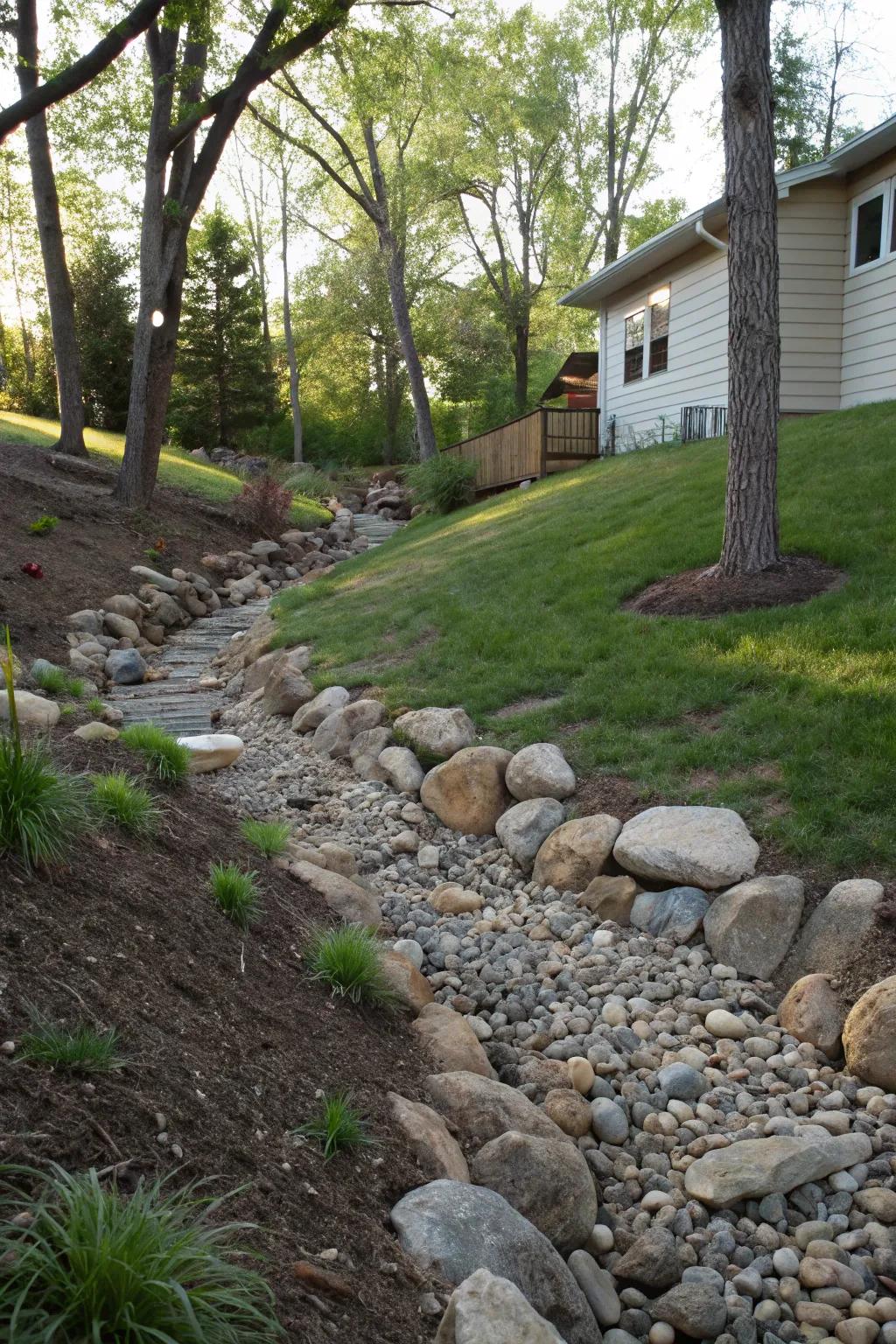
A dry creek bed not only adds a naturalistic charm but also effectively channels water away. I created one meandering through my garden, which has become a stunning focal point.
Products that could assist:
- Decorative River Rocks: Enhance your dry creek bed’s aesthetic appeal with these natural river rocks.
- Landscape Fabric: Prevent weed growth and maintain soil stability with sturdy landscape fabric.
- Garden Edging Stones: Define your creek bed with durable edging stones for a clean, finished look.
14. Install Drainage Solutions
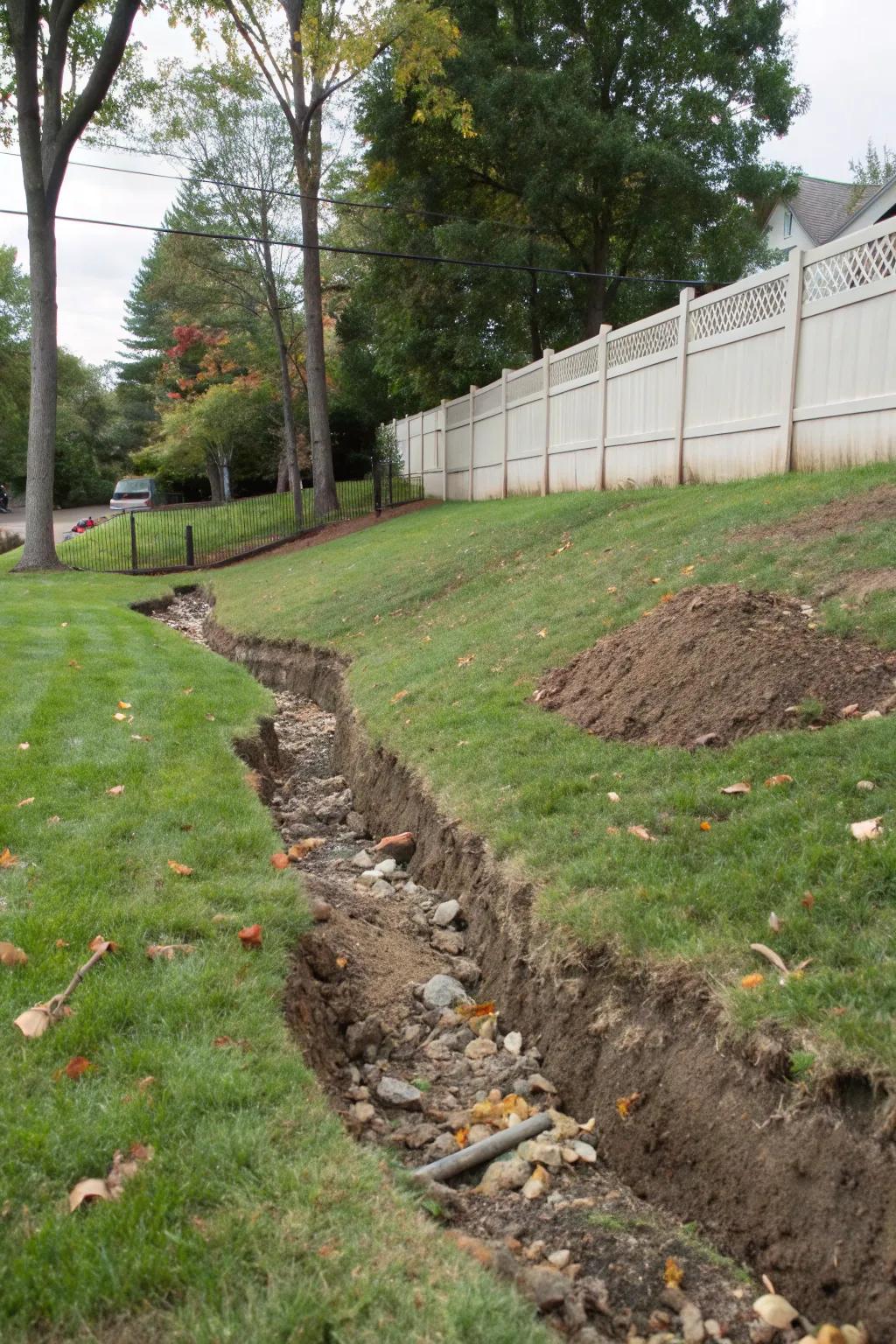
Proper drainage systems like French drains can prevent water from eroding your slope. I installed one that discreetly channels water away from vulnerable areas in my garden.
A few things you might like:
- French Drain Pipe Kit: Easily install a French drain to manage water flow and prevent yard erosion.
- Gravel for French Drains: Use quality gravel to increase drainage efficiency and support your French drain installation.
- Drainage Fabric: Apply drainage fabric to enhance water flow and prevent soil clogging in your drainage system.
15. Plant Ground Cover
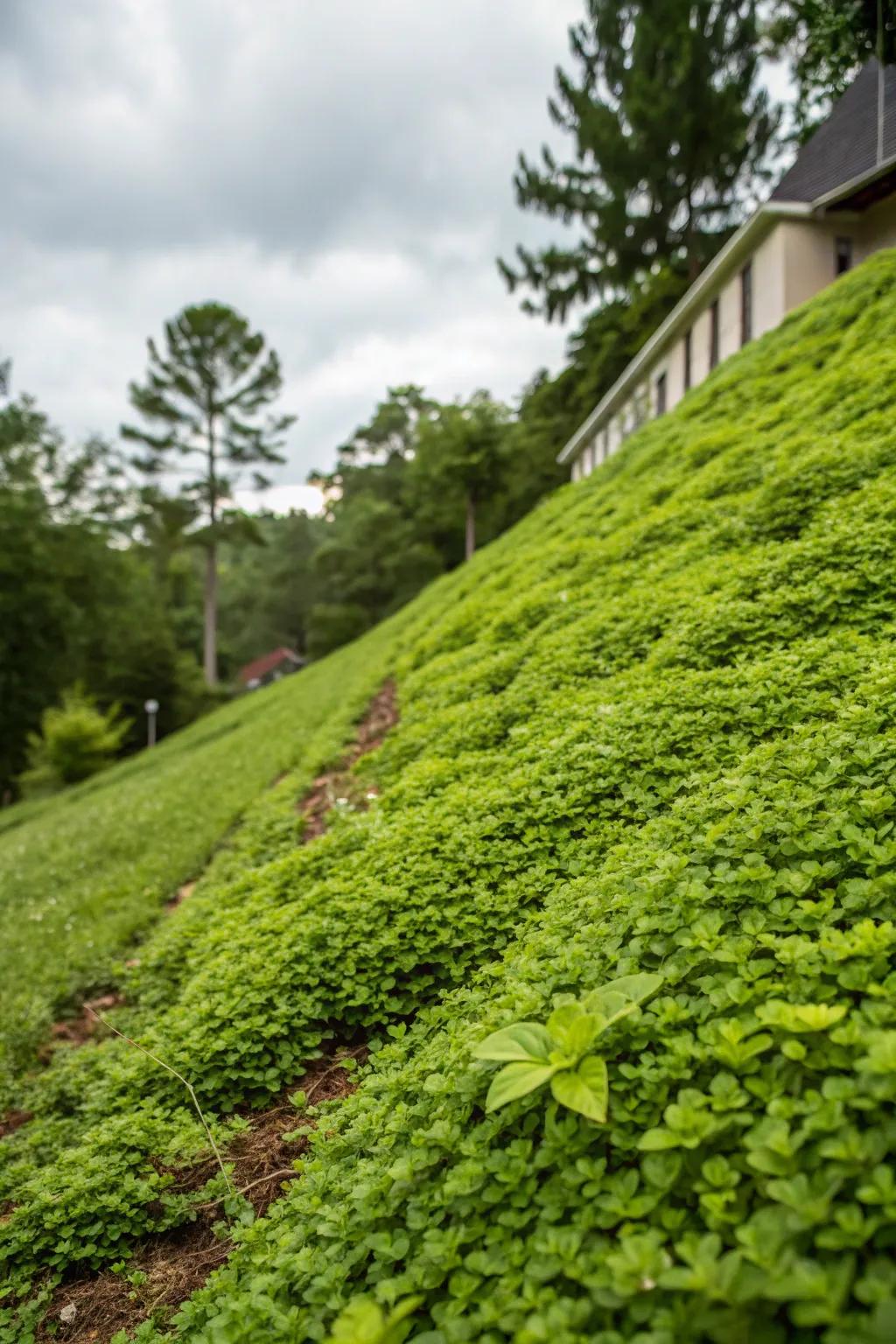
Using ground cover plants helps stabilize the soil with their dense network of roots. I’ve found that creeping thyme and sedum work wonders on my slopes, adding both beauty and function.
Maybe worth checking out:
- Creeping Thyme Seeds: Enhance your slope with creeping thyme for beauty and erosion control. Easy to plant and maintain.
- Sedum Ground Cover Mix: Add vibrant sedum to your yard, stabilizing soil with minimal effort. Perfect for sunny slopes.
- Ground Cover Starter Kit: Kickstart your ground cover planting with an all-in-one starter kit. Ideal for beginners.
